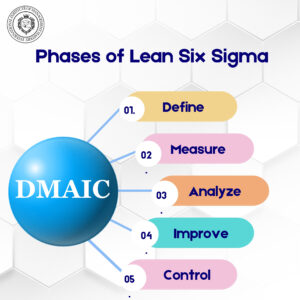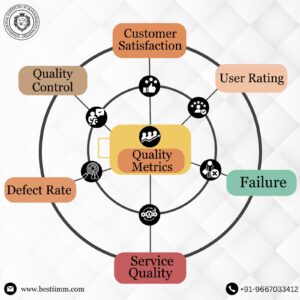In the world of process improvement methodologies, Phases of Lean Six Sigma stand out as a powerful approach to enhancing efficiency, reducing defects, and ultimately delivering better results.
At the heart of Lean Six Sigma lies DMAIC – an acronym that represents the five phases critical for systematic problem-solving and process enhancement.
Let’s delve into these phases and understand their significance in improving organizational performance.
Before Starting DMAIC: Select a Good Project

The focus of any Process improvement effort is selecting the right project. Good candidates for improvement will set you up for success with DMAIC. Here are 4 key guidelines:
- Choose an obvious problem within an existing process
- Choose something that would make a difference but would not be overly complex to address—Meaningful but Manageable
- Make sure there is potential to reduce lead time or defects while resulting in cost savings or improved productivity
- Check if you can collect data about the selected process—you want to achieve Measurable improvement
Define:
The first step in the DMAIC methodology is to define the problem or opportunity for improvement clearly.
This involves understanding the project scope, identifying stakeholders, and establishing clear objectives.
Without a well-defined problem, efforts to improve processes can become misguided, leading to wasted resources and ineffective solutions.
Think of this phase as setting the groundwork for the entire improvement journey.
Measure:
Once the problem is defined, the next step is to measure the current state of the process. This involves collecting data on key process metrics and performance indicators.

Measurement allows us to quantify the extent of the problem, identify areas of improvement, and establish a baseline for comparison.
Accurate measurement provides valuable insights into the process’s performance and helps in identifying critical areas that require attention.
Analyze:
With measurement data in hand, the analysis phase focuses on identifying root causes contributing to the problem or variation in the process.
Various analytical tools and techniques such as root cause analysis, fishbone diagrams, and Pareto charts are utilized to delve deeper into the underlying issues.
The goal is to uncover the factors that significantly impact process performance and prioritize them based on their influence.

Through analysis, organizations gain a deeper understanding of their processes and uncover opportunities for improvement.
Improve:
Armed with insights from the analysis phase, the improvement phase focuses on implementing solutions aimed at addressing the root causes identified earlier.
This phase emphasizes creativity and innovation in finding ways to optimize processes and eliminate defects.
Improvement initiatives may involve redesigning workflows, implementing new technologies, or streamlining existing procedures.
The key is to implement changes that have a measurable impact on process performance and align with organizational goals.
Control:
The final phase of DMAIC is control, which aims to sustain the improvements achieved throughout the project.
This involves developing control plans, establishing performance metrics, and implementing monitoring mechanisms to ensure that the gains made are maintained over time.
Effective controls help prevent the recurrence of problems and provide early warning signs of process deviations.
Additionally, this phase involves documenting lessons learned and disseminating best practices to ensure continuous improvement beyond the project’s completion.
In summary, DMAIC serves as a structured roadmap for organizations seeking to improve processes and achieve operational excellence.
By following the five phases – Define, Measure, Analyze, Improve, and Control – organizations can systematically identify, analyze, and address process issues, leading to tangible improvements in quality, efficiency, and customer satisfaction.
Furthermore, DMAIC encourages a data-driven and collaborative approach to problem-solving, leveraging the collective expertise of cross-functional teams to drive meaningful change.
By engaging employees at all levels of the organization, Lean Six Sigma fosters a culture of continuous improvement where everyone plays a role in enhancing organizational performance.
Conclusion:
Understanding DMAIC and its five phases is essential for organizations committed to achieving excellence in their operations.
By embracing Lean Six Sigma principles and applying the DMAIC methodology, organizations can unlock significant opportunities for improvement and drive sustainable business success.





